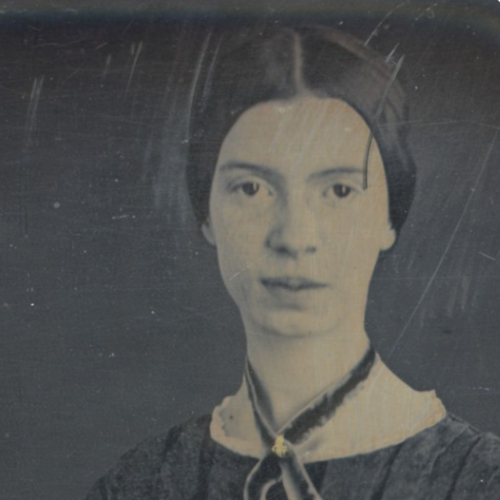
Biography: Name: Emily Elizabeth Dickinson. Date of birth: December 10, 1830, Place of birth: the family’s Homestead in Amherst, Massachusetts. Her position: The middle child of Edward (1803-1874) and Emily Norcross Dickinson (1804-1882). Date of Death: May 15, 1886 Cause of death: Bright’s disease followed by a stroke. General Information: She is one of the greatest American poets. Wrote in the Romantic Period. After she died, her poems were published and she became famous. She lived a life of a hermit. Although She had many friends, she never married. A number of her people died in quick succession, including her mother, her friend Judge Otis Lord, her young nephew, her good friend Helen Fiske Hunt and Dr. Charles Wadsworth. Influences: “Dickinson’s deepest debts were to the Bible and to British writers.” She knew the poetry of Longfellow, Holmes, and Lowell. Ralph Waldo Emerson, Milton, and Keats were favorite of Dickinson. William Shakespeare was also a potent influence in her life. She read the poetry of Charles Dickens. “But the most English contemporaries who mattered most of her career were Elizabeth Barrett Browning and the Bronte sisters.” Her Subjects: Her poems mostly were about death. Also she wrote about life, love, nature, time, and eternity. The work progress: High idealism. Yearning for companionship. Gradually give way to. Mute death. Cold death. The pattern: ABCB rhyme scheme. Dashes and regular meter. The first stanza and the third & the second and the fourth. Create the four- three , four- three stress pattern. Iambic style. The Poem shows: That every aspect of human life ideals, human feelings, identity itself--is erased by death But by making the erasure gradual--something to be "adjusted" to in the tomb. And by Portraying a speaker who is untroubled by her own grim state Dickinson created the grotesques feeling of compelling frightened and comfort at the same time. Done by: Shaikha AL-Adwani Lina Nabil